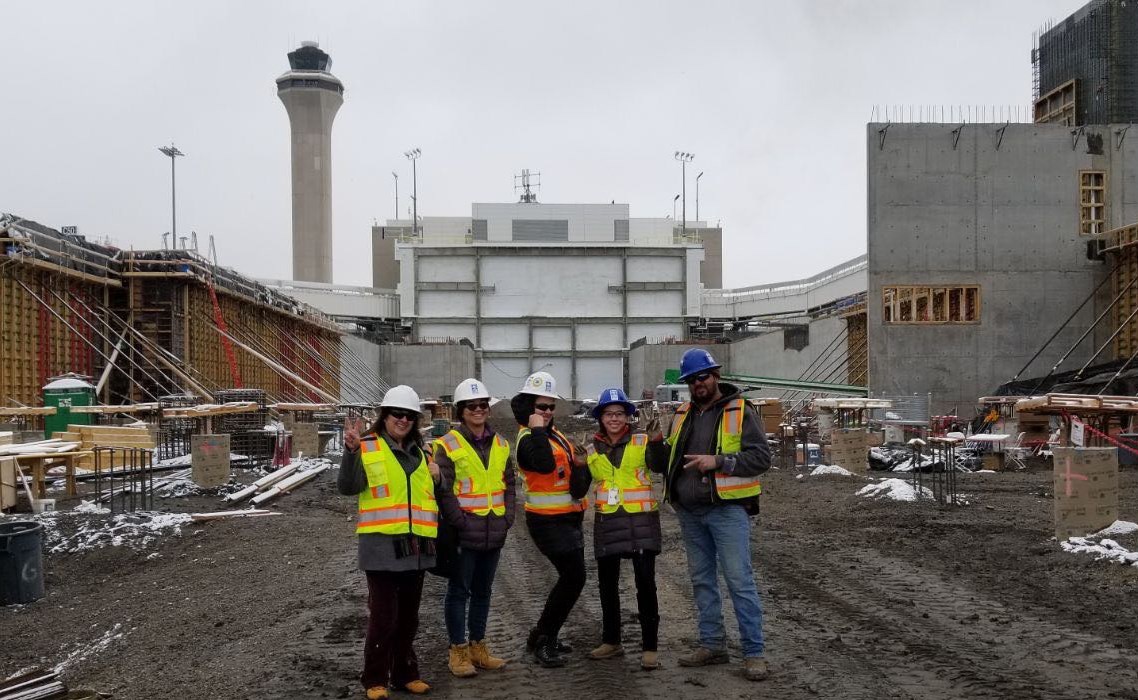What does it take to be an effective financial activist?
After supporting 156 Just Economy Institute fellows over the past six years, we have some answers. Whether they’re impact investors, advisers or community leaders, successful financial activists share a willingness to listen and learn, an ability to identify and solve root problems and a commitment to doing the internal work that makes positive change possible.
The following lessons are the best practices of leaders who are working to turn a financial system that produces obscene wealth inequality and environmental degradation into one that enables all communities and the natural world to thrive.
1. Work in and with communities
Involving people who are closest to the problem is the surest path to durable solutions. Effective financial activists engage community members in defining a problem and draw on their collective intelligence to explore potential solutions. Activists can then leverage their expertise to identify the resources needed to make those solutions feasible, taking care not to create new structures that put themselves at the center as the sole problem solvers.
This approach requires leaders with a certain amount of humility. As director of innovation and initiatives at Scale Collaborative, Kristi Fairholm Mader works with community leaders and organizations across Vancouver Island and Canada.
“We are constantly learning from them about what it takes to create resilience and scale impact,” she says. “Community knows what community needs. Organizations working on the ground are the ones that see the gaps, identify solutions and have the deep relationships needed to get things done.”
Helping them scale requires filling a gulf between “the deep understanding and solutions that community organizations can offer and a system that supports the scaling of those solutions,” she adds. “We build culture around responding quickly, taking time for conversation, entering with curiosity, seeking understanding, recognizing the effort and brilliance that exists and asking how we can add to it, respecting current relationships and showcasing the amazing work of others. All these things help build trusting relationships—and relationships matter the most.”
2. Use an integrated capital approach
Social entrepreneurs and community wealth-building projects require diverse forms of financial and social capital—and the right mix varies across the life of an enterprise. Often the most fundamental benefits funders can bring to the enterprises they support are patient financial capital, social and intellectual capital and a commitment to integrated returns: not just financial, but also social and ecological.
Benjamin Vann, founder and CEO of Impact Ventures, observes that “capital has not always been readily accessible to all communities, and this is sometimes intentional. Leveraging all the tools in the tool belt allows you to meet entrepreneurs where they are, thus unlocking their genius and true potential to close the opportunity gap.”
Impact Ventures operates both an accelerator and an integrated capital fund focused on women and communities of color, and Vann believes the intellectual, social and cultural capital the accelerator provides is essential for diverse entrepreneurs to thrive.
“Creating a safe space for them to be authentically themselves allows for humility, coachability and adaptability to take place,” he says. “Couple these forms of capital with the right mix of financial capital, and you have a recipe for true collaboration and transformation.
“Business moves at the speed of relationships and opportunities don’t come out of thin air; they come from people,” he adds. “Mentorship can open doors, minimize mistakes and even save money when we begin to move outside of our typical social circles and build more-inclusive communities.”
3. Question assumptions about money and finance
When financial activists introduce new ideas and hear, “That’s just not how things work,” the critics are simply reinforcing assumptions that serve the interests of those who’ve traditionally held money and power. We shouldn’t assume that all financial advisers or investment bankers know what’s best: Our dominant financial system is not benefiting the vast majority of people or the planet.
People have been socialized to underestimate their own insights about finance. But when they realize conventional wisdom usually isn’t applicable to current problems and start working from their own understanding, they often develop new solutions that create community wealth and resilience.
Marlena Sonn, director of finance and investments for Solidaire Network and a veteran investment adviser, traces her “Get Out moment with the financial services industry” back to 2013.
“At the time, I truly believed that public markets could be an agent of positive change, one that could do good by doing well,” she says.
Then the UN Environment Programme released TruCost’s calculation of what would happen if industries internalized unpriced natural capital, or “externalities”: None of the top 20 sectors ranked by environmental impacts would be profitable.
“If no major industry was profitable without shunting the costs of pollution and human misery off on the general public,” she says, “then the growth that is required by public markets is actually a form of environmental debt, with no break-even in sight.”
The realization led her to spend 10 years trying to pay back some of the debt by sinking carbon back into the land.
“I still participated in public markets until very recently,” she says. “But that moment of awakening to our true environmental debt helped prime me for the work I’m now doing funding social and climate justice movements.”
4. Make the most of an outsider’s advantage
Outsiders to the financial system—especially women, people of color and folks who haven’t studied finance—see capital solutions that insiders often don’t. They haven’t been trained to adopt traditional practices and approaches, and they tend to be better at noticing and communicating with people who are different from them. They come to systemic problems with a more open mind: It’s easier to have aha moments and breakthroughs if you don’t have a lot of preconceptions and conventional thinking to unlearn.
“Coming from rural poverty and being QTBIPOC, I lived in the margins of realities across the spectrum of my experiences,” says Caesaré Assad, who labored as a food worker for a significant part of their career. “These parts of me drove a lot of my professional choices, pushing myself to the edges, where I was able to observe and understand the levers that drive the system.”
“I am not guided by the rules or frameworks that promote replication, extraction and marginalization. These never worked for me,” Assad continues. “This is how I found myself working for systems change and wealth redistribution.”
Assad founded the Centipede Collective to facilitate food and finance systems change, and believes outsiders have a unique role to play as we make an existential shift.
“One of my crucial insights has been an ability to see what doesn’t yet exist through unlikely partnerships,” they say. “My work as an outsider is to build bridges of understanding—to expose the potential for mutual flourishing by creating more space for everyone to lean in and contribute to people taking the power back.”
5. Do all the work
JEI fellows often enter the program believing that learning practical skills—how to do due diligence, how to structure capital deals—is the key to meeting their ambitions. Many find, to their surprise, that the inner work is equally or more important. Having the emotional intelligence to listen well, understand our own biases, strengths and growth areas, and be open to learning from others’ experiences is essential to the collective work of systems change.
“It’s easy to recall times when I compartmentalized practical work, inner work and collective work into neat little packages sorely lacking nuance and fluidity—in other words, non-overlapping verticals, with extra emphasis on the practical and not a whole lot of interplay between the collective and inner work,” says Jasmine Rashid, director of impact at Candide Group.
The walls began to break down when she showed up to her first JEI immersion “wearing my proverbial work hat” and found that she had signed up for “a much more embodied experience.”
That experience, and the community of practice she formed with her fellowship cohort, led her to become a certified practitioner in the Trauma of Money Method, a compassionate approach to trauma healing and financial security that transcends traditional financial literacy dogma.
“Opportunities that tend to my inner world and well-being remind me that I’m intrinsically connected to the well-being of all that surrounds me,” she says, “and allow me to leverage practical tools to enhance collective well-being.”
6. Partner across differences
Many JEI fellows seek to learn from people with different personal and professional experiences. If they’re coming from philanthropy, they want to learn about social change investing; if from community organizing, how to understand the language of investors; if from the investment world, how to work with communities.
This learning process can lead to cross-class, cross-race collaborations that have deep impact. Partnerships that bring together people with different skills, backgrounds, networks and access to capital typically are the most boundary pushing and influential.
That’s especially true when they involve people who have the most power ceding that power to those who are closest to the solutions—a shift that often is liberating for both parties.
Keoni Lee, CEO of Hawai‘i Investment Ready, saw magic in the way his JEI fellowship brought together people from wildly different backgrounds and guided them in exploring their personal relationship to money as a first step in working for a more just and equitable community.
“It created conditions for conversations that I don’t think would have existed otherwise,” he says. Lee sought to recreate that experience recently when launching a food system funders cohort with 24 active investors across philanthropy, government and the private sector.
“When we brought participants in for the first in-person event, they thought they were coming to learn about impact investing, and there was this energy of uncertainty—‘Why am I here?’” he continues. “But we started with a group visioning exercise that allowed people to get to know each other on a personal level. After we did that work, the energy rose, and there was a sense of abundance and possibility rather than scarcity and skepticism.”
Starting with a unified vision and purpose and cultivating empathy for different perspectives and experiences is essential for this cross-class, cross-race, cross-cultural group to realize its potential, Lee believes.
“Right now, we are in the very early stages of solving for some of the market challenges we have in scaling better food systems,” shares Lee. “As we move into more difficult conversations and conflict arises, we now have the foundation of a relationship and can have those conversations with more openness.”
7. Keep feeding your vision
Making progress on systemic change requires making time and space to keep working on your vision. Allow it in, even if it feels too big. Take stock of it. Reimagine it. Do something substantial to feed it. Share it with your community of practice.
Fellows who do this at regular intervals say it gives them clarity on their direction, enabling them to prune away things that are not central to the vision and change course when they need to.
Ain Bailey’s story illustrates how a percolating vision can be a guiding hand. The idea for New Seneca Village—a retreat center designed and governed by and for women of color and centered on restoration, connection and visioning—came to her about eight years ago.
“I rejected it immediately as someone else’s work to do,” she recalls. “For years it felt too hard to do right. In time, I realized that vision had led me to relationships that significantly shaped the idea, and to experiences that meant I had access to resources and connections to make the vision possible.”
Today New Seneca Village partners with existing retreat centers and hosts four annual residencies for over 65 cis, transfeminine and nonbinary women leaders of color.
Bailey’s North Star is a permanent retreat center that can responsively and flexibly serve up to 300 leaders a year.
“This collective vision is fed in many ways,” Bailey says, “primarily by staying connected to and engaged with the leaders and healers that we serve and by remaining deeply connected to spirit, which intuitively guides us in our intention to provide an ongoing Village experience grounded in sovereignty, generosity and abundance.”
Relationships matter most
Realizing the comprehensive vision that unites financial activists—a new economic system that is equitable, regenerative and inclusive—is going to require tenacious application of these lessons. And Fairholm Mader’s maxim, “Relationships matter most,” underlies them all. So does a need for grace.
“We are challenging the system that’s conditioned us,” Lee observes. “It’s hard work. We have to approach conversations with more understanding. If we fire back the first time someone is trying to be in relationship with us, it’s done. As we unwind the ways we believe, act and think, it’s going to be messy for a bit, and we have to understand that.”
Deb Nelson is the founder and executive director and Tina Beck is the deputy director of the Just Economy Institute, which educates, supports and connects a growing movement of financial activists who are shifting the flow of capital and power to solve social and environmental problems.











